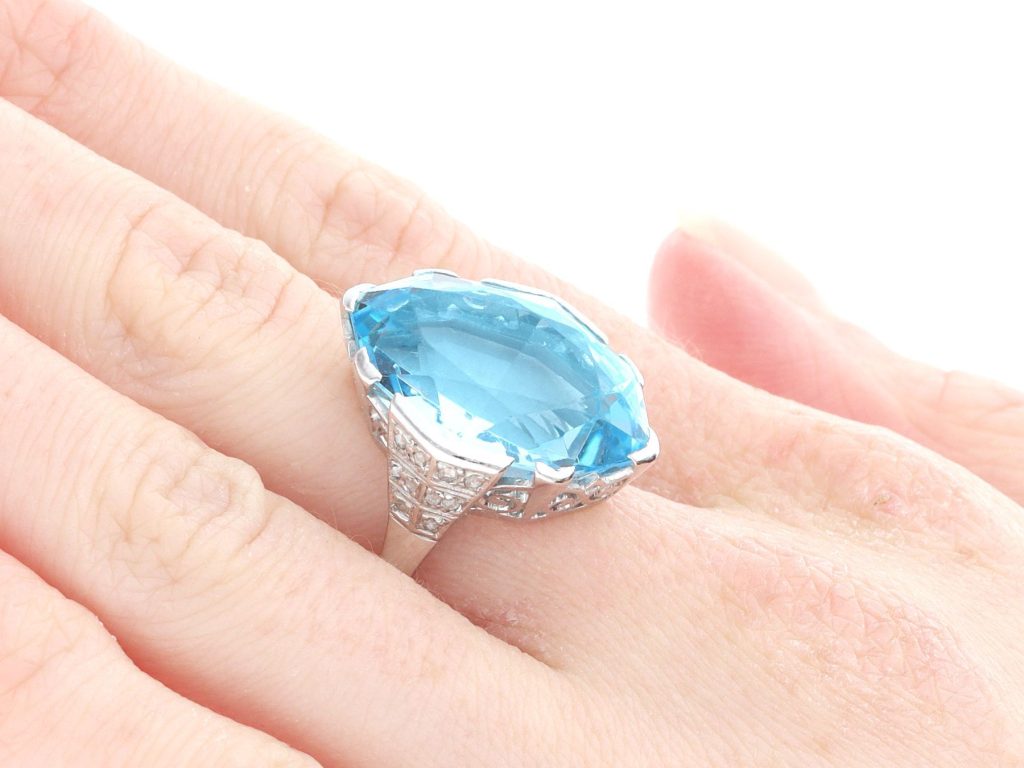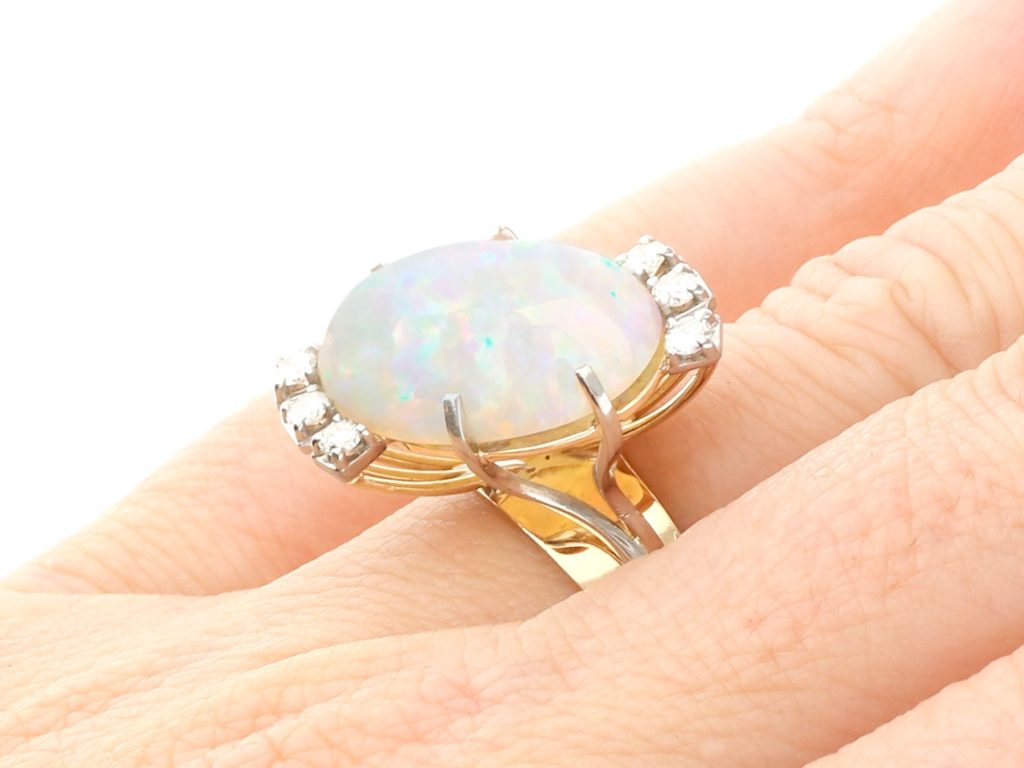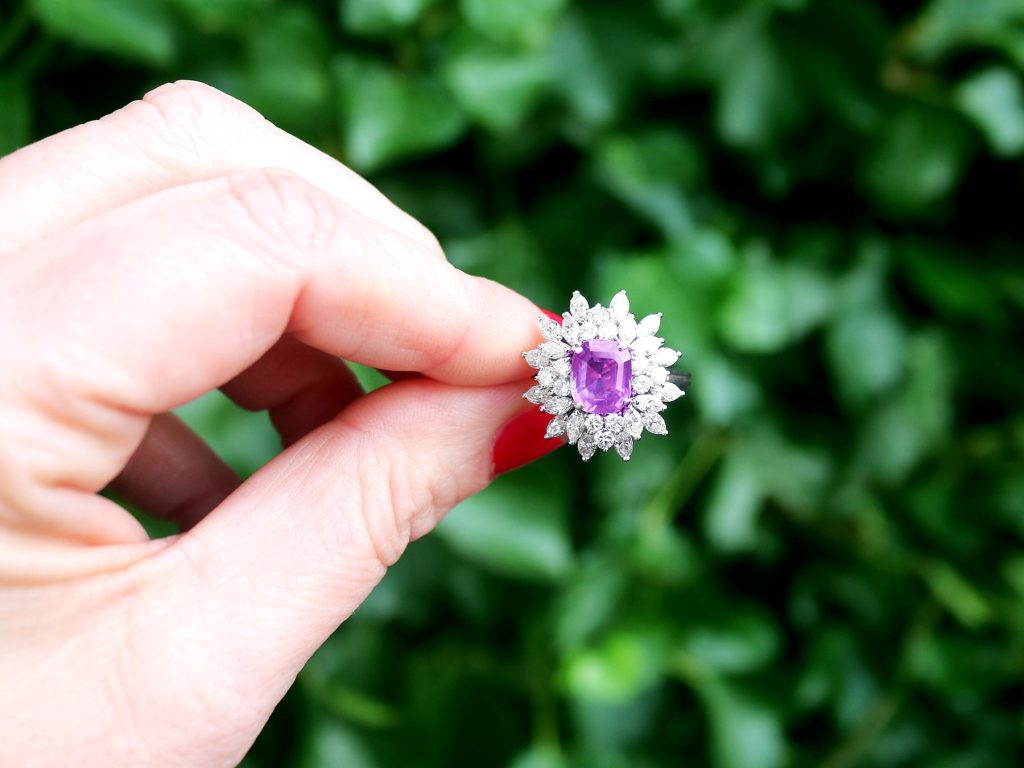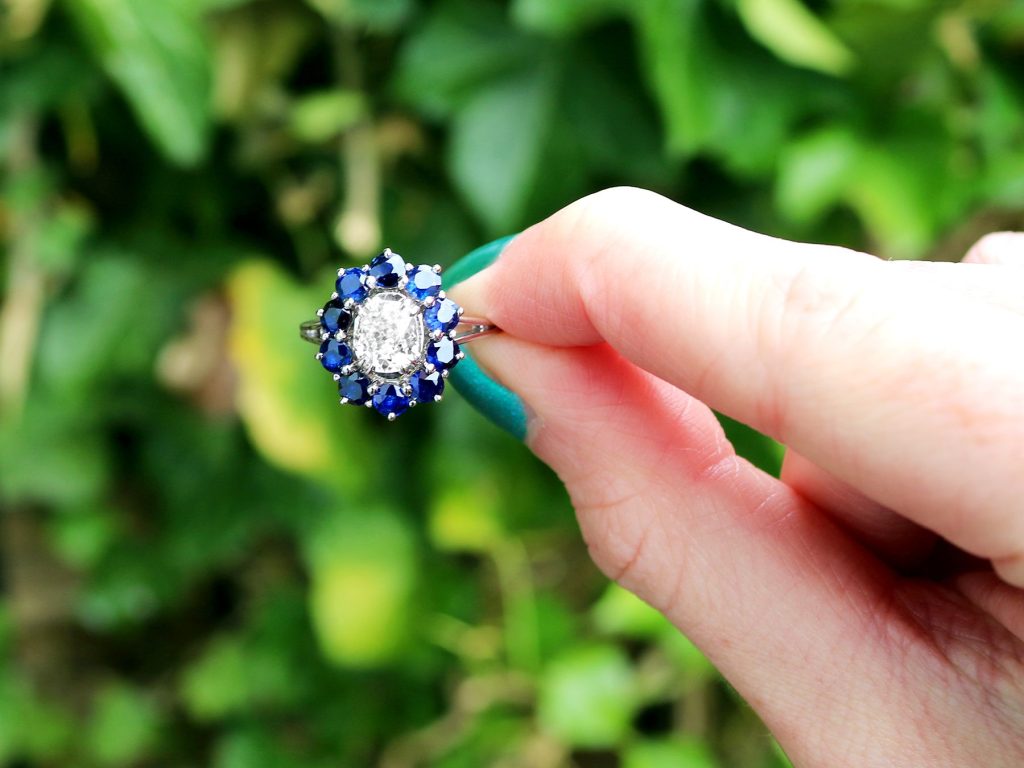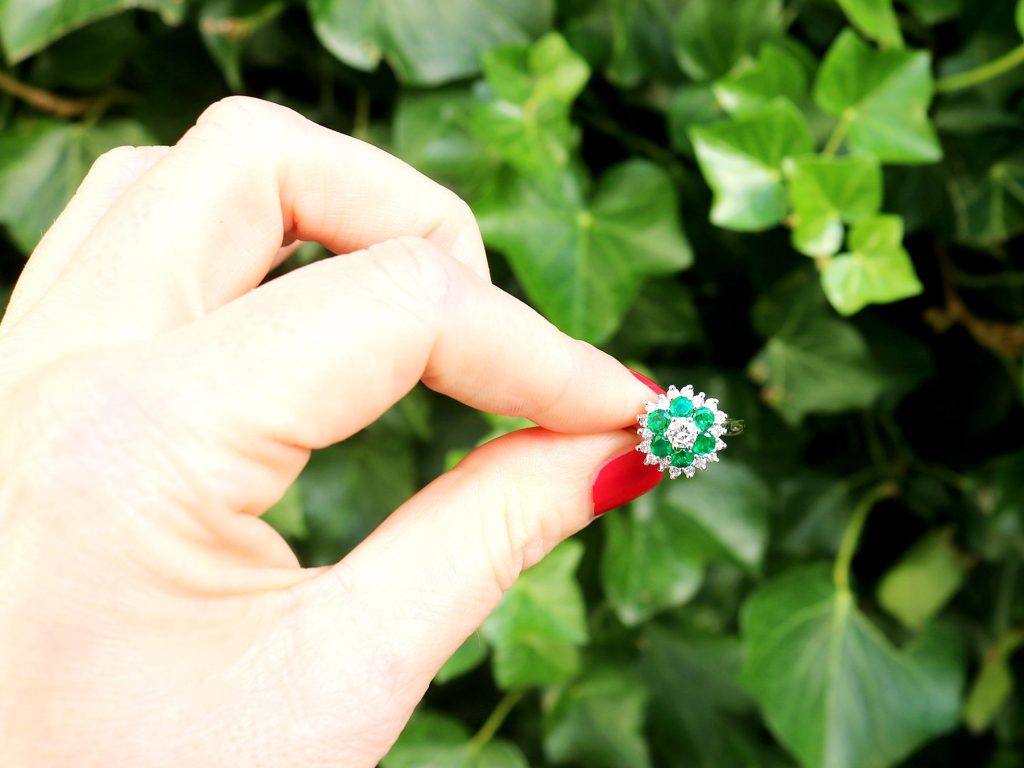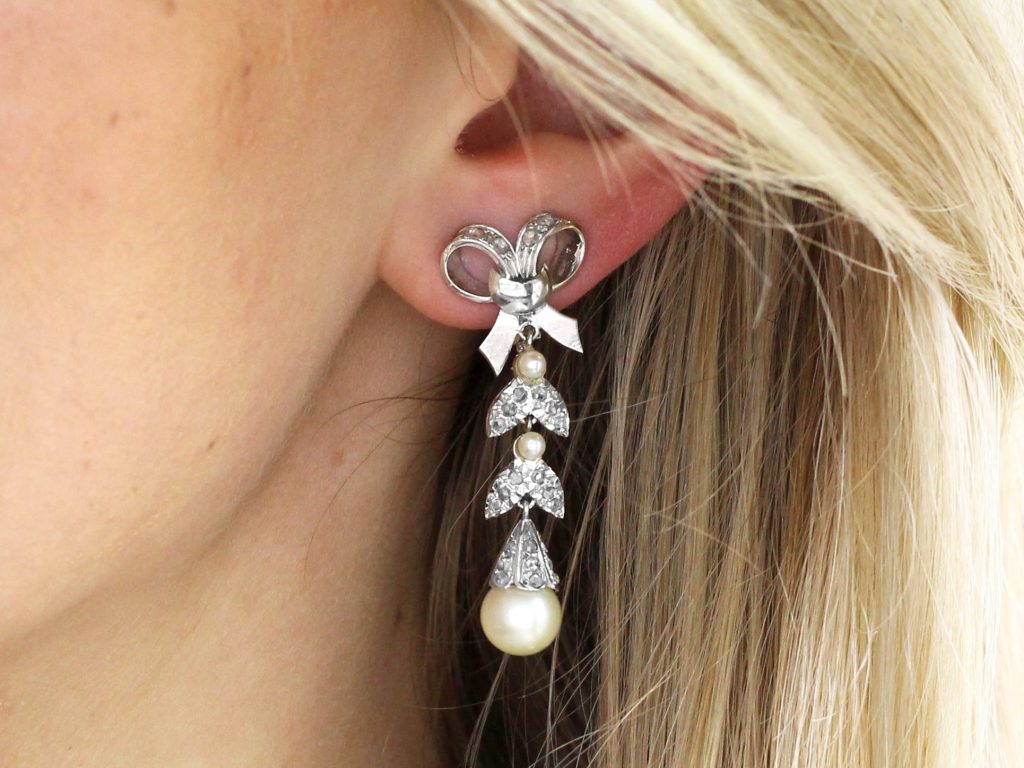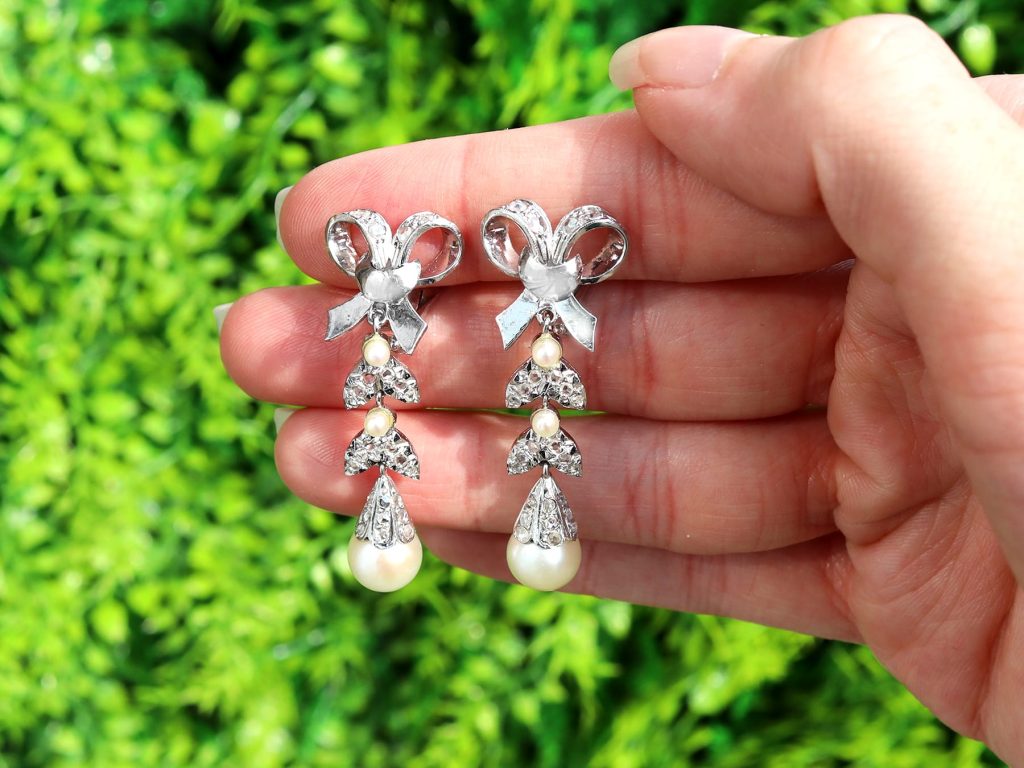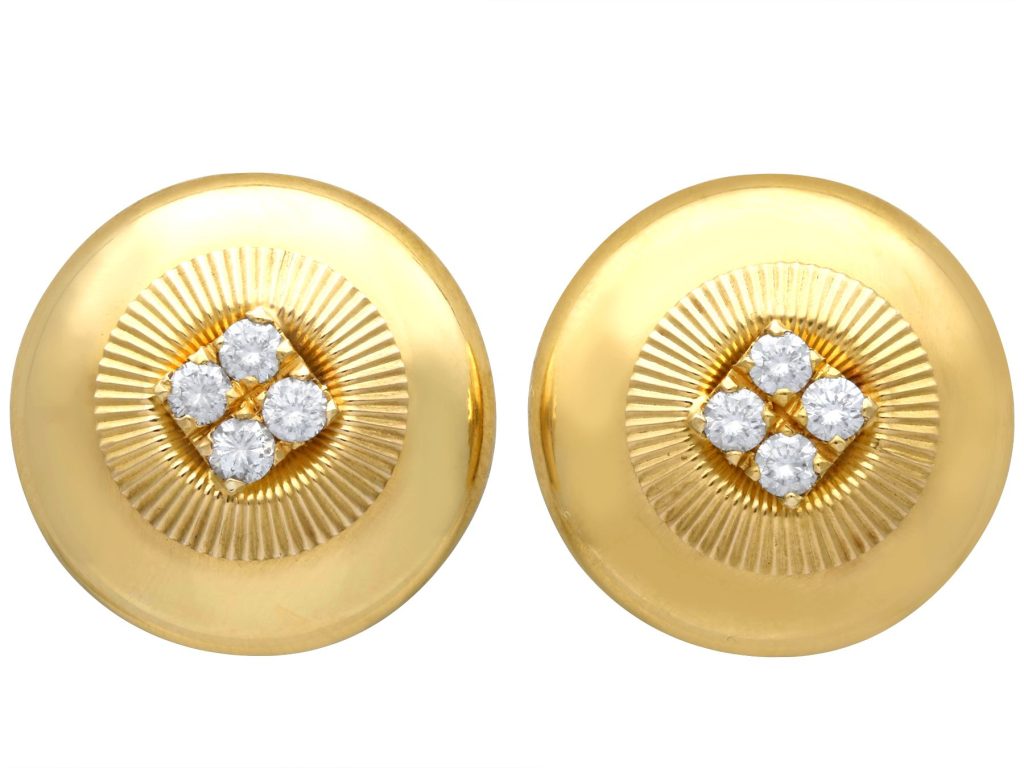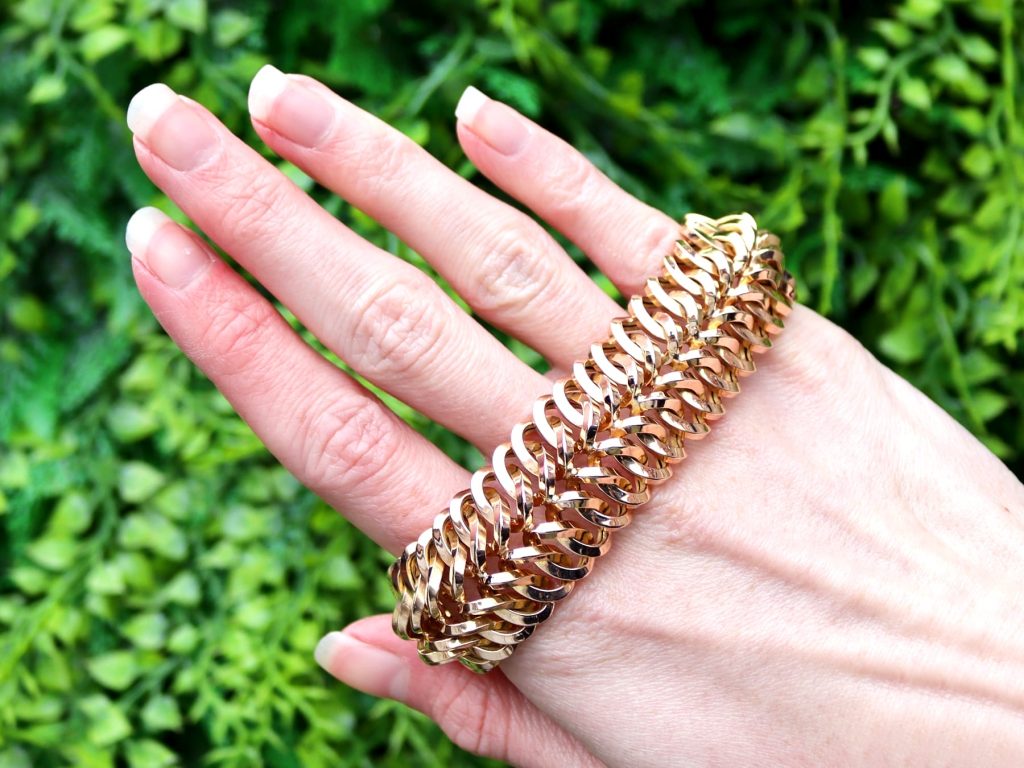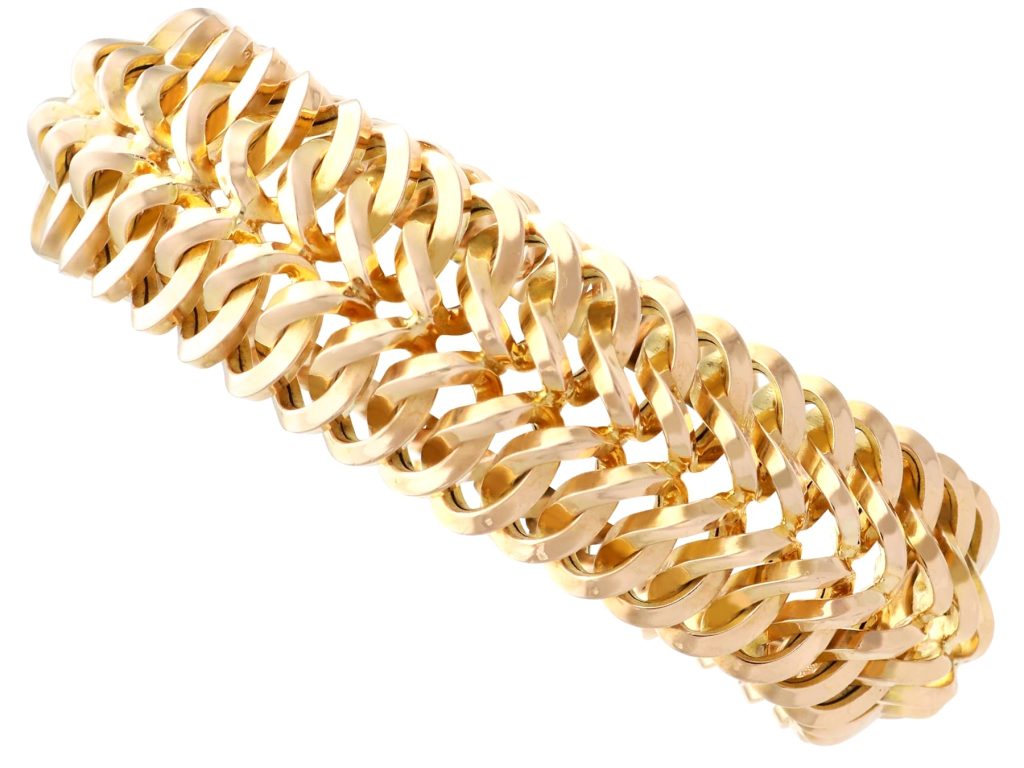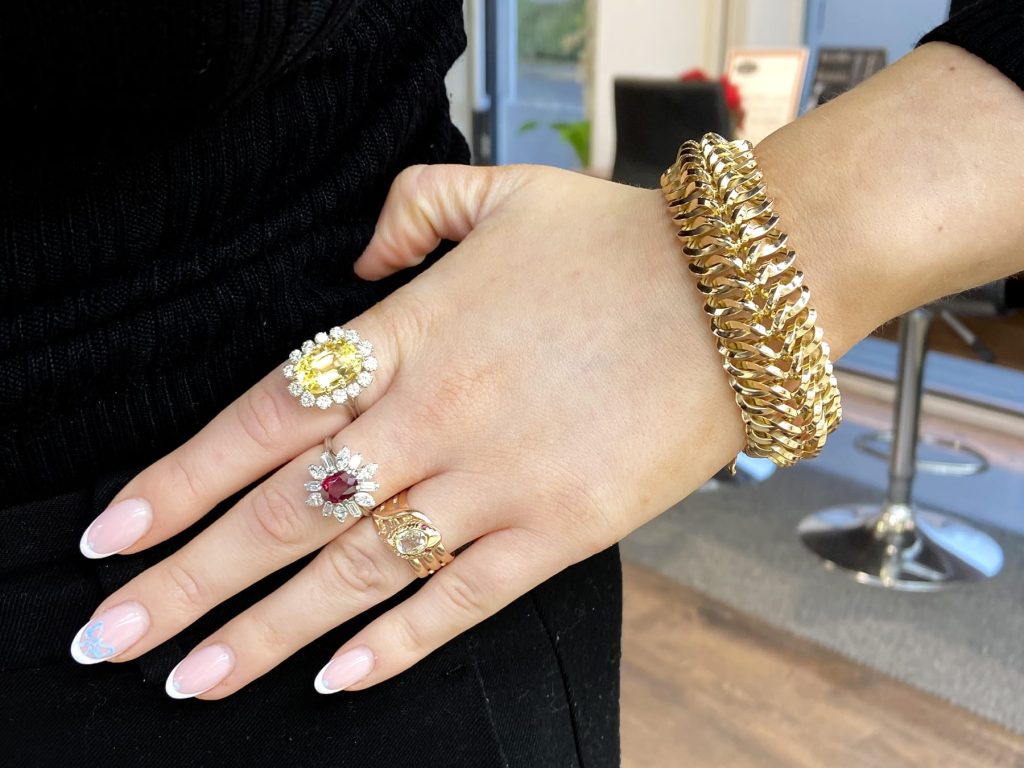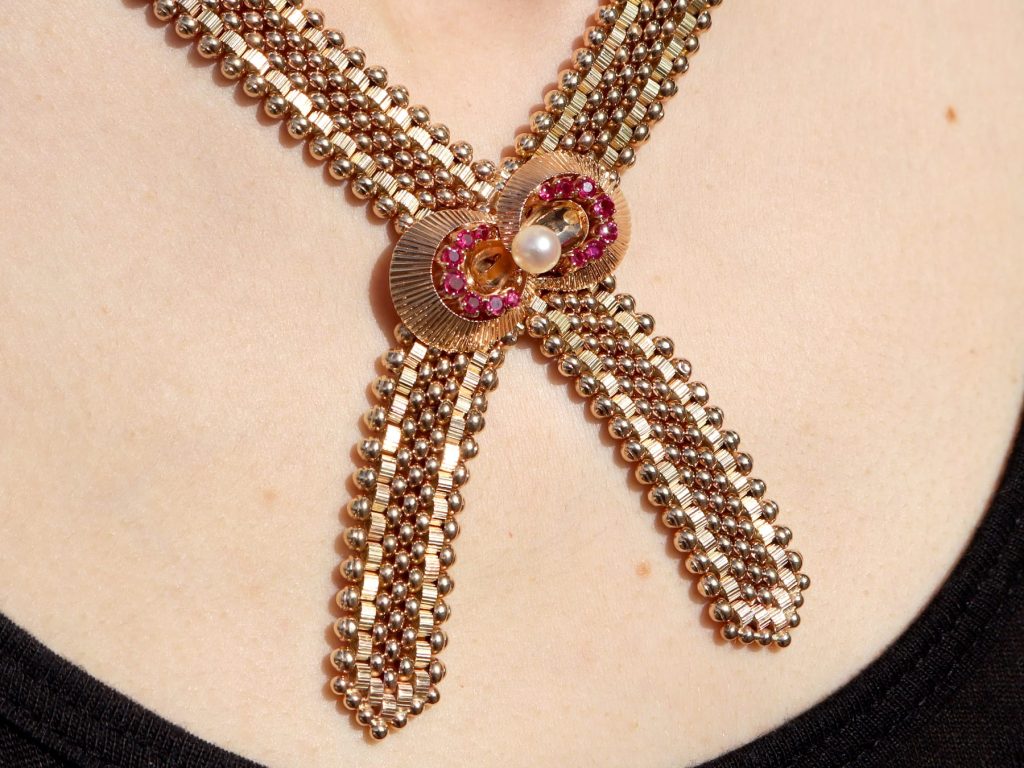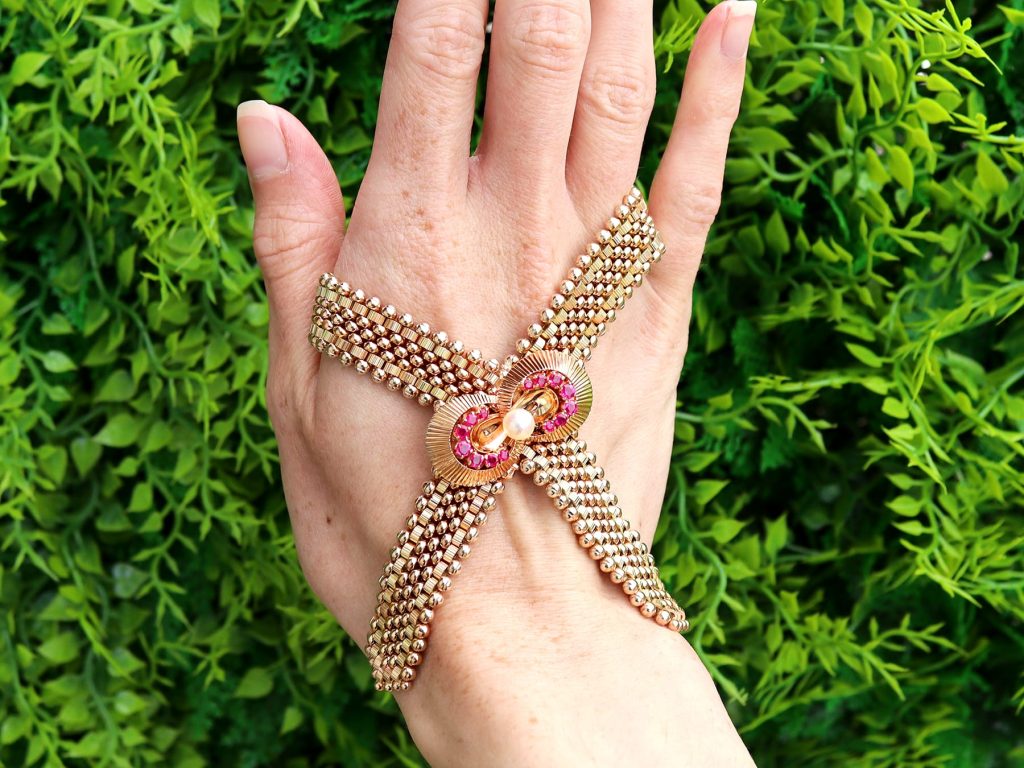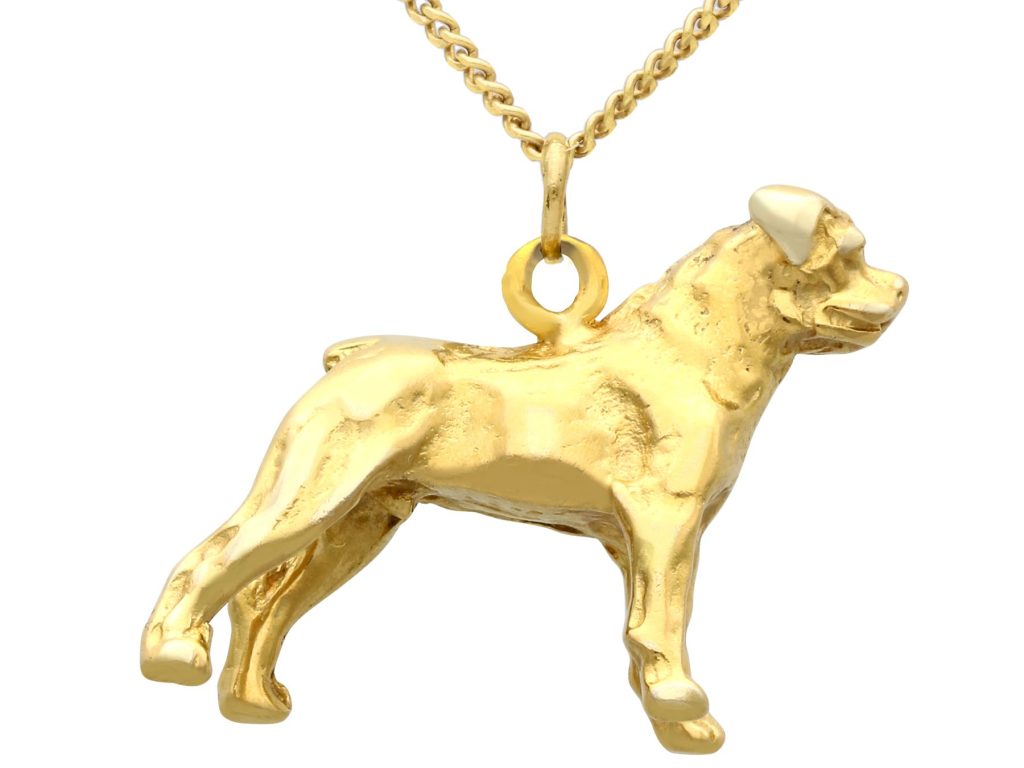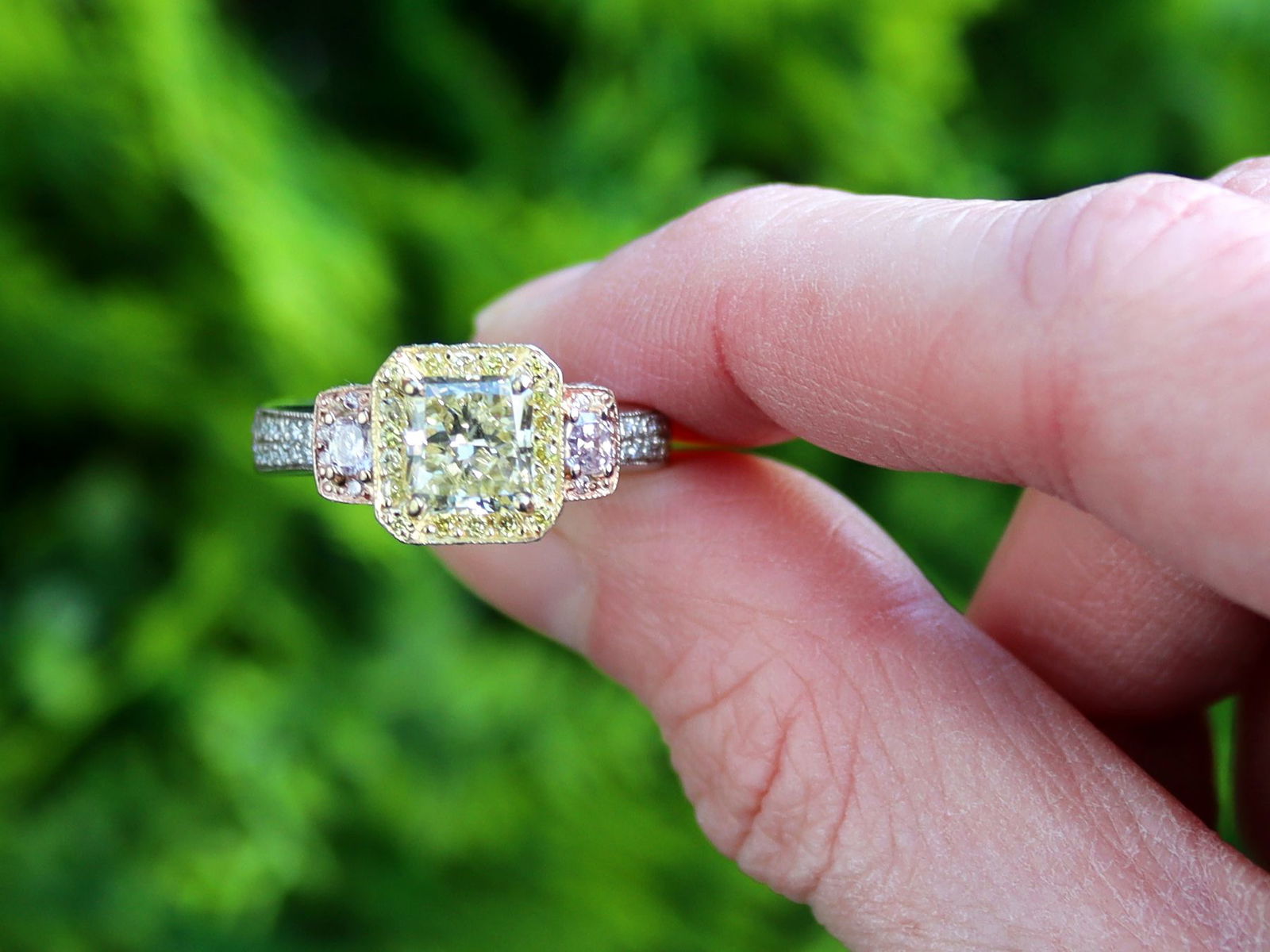The 1960s were a time of bold experimentation, individualism, and vibrant aesthetics, and this is especially evident in the era’s jewellery trends. With fashion icons like Audrey Hepburn, Twiggy, and Brigitte Bardot at the forefront, the decade embraced everything from playful mod styles to luxurious bohemian influences. Here’s an exploration of the defining jewellery trends of the 1960s.
1960s Ring Trends: Bold and Statement-Making
The 1960s were all about making a statement, and rings were no exception. For those with a taste for the unconventional, the 1960s also saw an influx of rings adorned with geometric shapes and patterns that reflected the era’s love for psychedelic and pop-art influences.
Oversized Cocktail Rings
Cocktail rings became synonymous with 1960s jewellery. These oversized, glamorous rings featured large gemstones in vibrant colours, often set in bold and unusual shapes. The large size of the stones, sometimes with ornate gold or silver settings, made them an eye-catching accessory perfect for evening wear. Designers also experimented with irregularly shaped stones, which gave the rings a unique, almost sculptural look. This trend matched the “bigger is better” mindset, as fashion became a powerful form of personal expression.
Floral and Natural Motifs
The “flower power” movement influenced many aspects of 1960s fashion, including rings. Floral and nature-inspired rings became popular, especially among those embracing the counterculture movement. Rings featuring daisy motifs, leaves, or even entire floral arrangements became symbols of peace and love. These designs were typically made from materials like enamel, wood, or semi-precious stones, giving them an earthy, handmade feel.
For those looking for a more luxe touch, floral rings with gemstone petals set in gold or silver were also widely available. These rings added a touch of whimsy and femininity to an otherwise bold era of style.
1960s Earring Trends: From Hoop Dreams to Drop Earrings
Earrings in the 1960s embraced size, colour, and a sense of drama, reflecting the growing fascination with futurism.
Drop Earrings and Shoulder Dusters
Drop earrings, often long enough to brush the shoulders, became another signature look of the 1960s. These “shoulder dusters” featured elongated shapes with tassels, chains, or clusters of beads that added both movement and flair. Eveningwear often called for crystal or pearl-studded drop earrings, creating a glamorous, elegant aesthetic that complemented the formal attire of the time.
For daytime, colourful drop earrings made from plastic or Lucite were popular, offering a mod-inspired twist. These lightweight materials allowed designers to create lengthy earrings without the weight, allowing wearers to keep up with the dramatic fashion trends of the decade comfortably.
Clip-On Earrings for Comfort and Style
With pierced ears less common than today, clip-on earrings remained popular throughout the 1960s. The clip-on style made earrings accessible to everyone and allowed for larger, more elaborate designs without the discomfort associated with heavy pierced earrings. Clip-ons featured everything from dangling styles to oversized studs and became a must-have for anyone following the latest trends.
1960s Bracelet Trends: Stacked Bangles and Chunky Cuffs
Bracelets were often worn in multiples during the 1960s, especially thin bangles that created a satisfying jingle when worn together, however wide cuff bracelets were favoured for their ability to make a statement on their own and offered a more dramatic look.
Wide Cuff Bracelets
Wide cuff bracelets were a major trend, bringing an elegant yet dramatic look to the wrist. These cuffs were typically made from metals like silver or gold, but some designs featured inlaid stones, enamel, or intricate patterns that drew inspiration from global styles. Cuffs allowed wearers to make a bold statement with just one or two pieces, especially when featuring motifs like abstract shapes or ethnic patterns.
Bohemian and exotic influences were popular in cuff designs, with many bracelets showcasing tribal or ancient patterns. Turquoise and coral stones, along with hammered metal effects, added to this exotic look, aligning well with the 1960s fascination with other cultures.
Chain-Link Bracelets
Chunky chain-link bracelets became a trendy, versatile choice in the 1960s, thanks to their modern and bold appearance. These bracelets often featured oversized links, giving them a statement-making look without the need for additional embellishments. Chain-link designs came in various metals, from silver and gold to chrome, creating a sleek, urban vibe.
Some chain-link bracelets were adorned with small charms or engraved plates, adding a touch of personalisation. Others were designed as adjustable link bracelets that allowed the wearer to add or remove links for a customised fit, making them a practical and stylish choice for daily wear.
1960s Pendant Trends: From Pop Art to Peace Signs
Pendants became a canvas for self-expression in the 1960s, with symbols and shapes that spoke to the era’s unique spirit, making them true statement pieces that could transform even a simple outfit.
Long Chains and Oversized Pendants
Another notable trend of the 1960s was the use of long chains, often paired with oversized pendants that hung well below the collarbone. These pendants were designed to make a statement, with large shapes and bold designs that drew attention to the jewellery itself.
This trend included everything from geometric shapes and medallion-style pendants to intricate filigree designs. Long pendant necklaces often featured chunky chains, adding to the overall boldness of the look. They were typically worn as single, striking pieces that complemented the modern aesthetic, allowing wearers to add a touch of drama to any outfit.
Pop Art and Psychedelic-Inspired Designs
The 1960s saw the rise of pop art, and this trend greatly influenced pendant styles. Inspired by the works of artists like Andy Warhol and Roy Lichtenstein, pendant designs often featured bold colours, playful shapes, and graphic motifs like polka dots, hearts, and stars. Brightly coloured pendants in materials like enamel, Lucite, and plastic embodied the era’s love for all things fun and youthful.
Psychedelic influences also made their way into pendant designs, with swirling, kaleidoscopic patterns and neon colours that captured the free-spirited, experimental vibe of the decade. These pendants often featured abstract shapes and patterns in vivid colours, aligning with the psychedelic art and music scene of the time.
The jewellery of the 1960s was as diverse as the decade itself, reflecting the era’s blend of optimism, rebellion, and artistic expression. Whether it’s a bold cocktail ring or a playful peace pendant, these trends continue to inspire modern designs, reminding us of the vibrancy and daring spirit that defined the 1960s.


